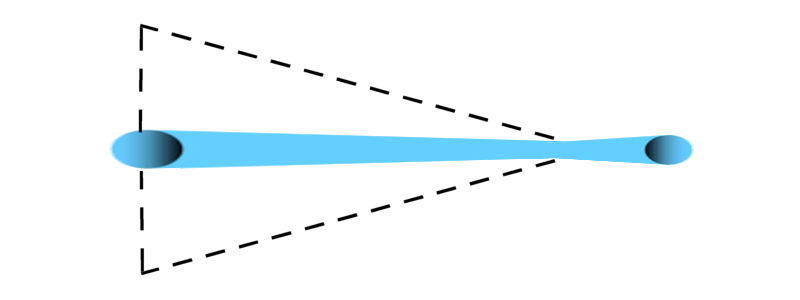Linearity. Emergence. Convergence pt.7
 Wednesday, June 27, 2012 at 10:34AM
Wednesday, June 27, 2012 at 10:34AM In part 6 we learned that straightforwardness meshes very well with gameplay systems. Of course, straightforward gameplay cannot cover all the types of experiences we've come to value in video games. It only represents one extreme end of the spectrum. In this part we'll look at the other extreme.
Open Design vs Gameplay Design
Because of emergence, open gameplay is open to different possibilities, to different positive outcomes, and to different player options. Even on the micro level having options is problematic for game design. A straightforward level challenge says "do it this way or fail." But an open challenge says "you can do it like this; or you can do it like that, or that, etc." Creating a game that allows options puts a lot of stress on the design. As unintuitive as it may seem, the nature of openness and gameplay are at odds with each other.
Having options complicates game design by forcing designers to balance for player driven possibilities instead of a fixed series of player actions. As we know, the nature of emergence is countless possibilities, or possibilities that quickly become too numerous to account for individually. So balancing around something we can't accurately account for is the core if the problem. Designing open gameplay around numerous possibilities will have some combination of the following three effects on its design; the challenge of the gameplay is reduced, the options become functionally redundant, or the workload is multiplied. The following explores these ideas in detail.
Effect 1:
Options reduce the challenge of gameplay. This drawback of open game design becomes obvious when you think about it. In a straightforward level there's one clear way to win. But as soon as you have another option (a different sequence or method of actions), you have two ways to win. --Keep in mind that we're talking about gameplay challenges with one goal. Multiple goal game design is a related but separate issue-- With more options to pursue victory some options will ultimately be less challenging than others. Essentially having options creates and widens the skill gap, which is simply the distance between the the skill floor and the skill ceiling.
The more viable options in a gameplay challenge the more you change the nature of the challenge. If you can win by taking one of many options then the goal of the game must adjust to encompass these options. Either the goal will expand to encompass the different options, or the options will shrink (become more similar in function) to fit through the narrow range of winning possibilities that the gameplay goal creates (the squeeze). Effect 1 deals with the former. It's a big deal any time goals are altered in game design. This is key in understanding why openness and gameplay have opposing natures.
Expanding the goal of a game directly interferes with every aspect of gameplay including the qualities that make it great (see the list of pros on part 6). With too wide of a goal window that accepts too many player options as viable, the squeeze is weakened. As a result players can succeed by learning less and molding themselves less to the challenge because they can focus on easier options.
With less learning required to win, there's a sharp limit on the range of skill the gameplay can stress. When you weaken the range of skill in this way you directly reduce the player's agency in the system. Designing a game with a few options might not have such a negative effect on the gameplay. But open games typically give players many options. If players have more ways to pursue victory that are easy, then the meaning that can only come from enduring the squeeze, developing skills, and rising to the challenge is weakened or eliminated altogether. Considering the skill floor and then working up to the skill ceiling is one way we commonly analyze gameplay. If options in open game design create a very low skill floor the whole game will be negatively effected.
The image above depicts an open game with an expanded goal (compare to this image). Notice how there is no cone shape because there's no squeeze. With so many viable options, players can progress without having to adjust their strategies or playstyles. RPGs typically feature open designs where players are free to approach challenges under leveled, at an appropriate level, and over leveled. In addition players typically have many options to customize their character's armor, classes, or attributes. With all this player driven variation of important gameplay elements, there are a lot of possible gameplay combinations. Some of these combinations are well tuned in terms of clear feedback, skill-based challenges, and difficultly. But there tends to be more combinations that are poorly tuned. I explain this idea in detail in my series Design-Space-Time Continuum. The point is that the emergence that creates the options for players to explore also introduces complexity and chaos into the gameplay experience. We generally want complexities to be balanced and add up in a meaningful way. But in more open games such meaning and clarity tends to be weakened or missing altogether. I represent these possibilities as holes in the image above.
Effect 2:
Designers create functionally similar options so that they're all viable in pursuing victory for a sufficiently narrow game goal. For example, take a simple RPG boss battle where the goal is to take down all of the boss HP. Let's say you have the option to choose from 100 different magic attack spells. Though each of these spells has a different name and does slightly different amounts of damage, they ultimately have the same function. In this example players have a lot of options, but they're not functionally distinct from each other. They're not balanced to create gameplay of interesting choices. A bunch of redundant options is not what we typically want in our open games. We don't want the illusion of choice. But the reality is, the amount of functionally distinct options a game can have is limited by its design space. I explained this idea in great detail in my article Emergent Mathematics pt3. When designers exceed the limits of their design spaces when creating gameplay options, the options will be redundant or functionally useless.
The problem with functionally redundant options is that they increase the complexity of the system without increasing the meaning that these options convey through gameplay. As I explained in my series Design Space: Infinite Undiscovery it is possible to put content into a game that works against the whole. Conveying ideas in games and art is a delicate process. Clear complex ideas are so hard to convey, detractors and distractions from this effort can do great harm very easily. Remember, the concept of checkhov's gun tells us not to add anything to art that doesn't support the core meaning because it will surely detract from it.

If the options are an illusion then you're actually playing a much more straightforward game.
For an example, in Knights in the Nightmare there are lots of weapons. But the clutter of the presentation and the shallow gameplay makes the gameplay far less than its complexity. I put hours of work into the game learning the complexities and nuances before I realized that I had wasted my time. You may argue that the variety of weapons allow players to customize their armies and find their own playstyle. But all of this is in vain if the gameplay is shallow and the weapons are very redundant. After all, playstyles are mostly defined by how we play (mechanics/gameplay actions), not by how we feel. Like in the RPG example above with 100 spells, just because an option is has a unqiue name and look doesn't mean it's really very unique at all.
Effect 3:
Designers multiply their work load by explictly designing for every branching, emergent possibility. Like with a branching narratives, the problem with having options and openness in design is that there are too many unknown variables to plan around. With straightforward or linear games, designers know exactly what the player experiences and in what order. Designers can tune games knowing what players have learned. As sort of a brute force way to to achieve this kind of tightness with open design, developers can create a straightforward challenges for every branching possibility. Sound exhausting? Good, because it is. Instead of making one finely tuned game, designing an open game with this method would require designers to make hundreds of games.
If the impracticality of this suggestion isn't sinking in, just imagine if Harry Potter was a choose your own adventure series where with each book there are different options for readers to explore. With each branching option, J.K Rowling would have to finish writing the entire Harry Potter series. It took Rowling 10 years to write all 7 books. So if there were as few as one branching point at the end of the first six books, then it would take Rowling close to 47 years to write thee 33 books just to cover the possibilities. All of this work just to support 6 branching points.
Not understanding this limitation of emergence and open design is why so many have poor suggestions on how to "fix" games like Zelda and Metroid. The idea of having "all of the items/powers" from the start of the game goes against both the narrative and gameplay arcs of design. In the same way that stories build meaningful climaxes by adding details over time in a clear context, video games add complexities over time and convey the context through level design and teaching. The freedom and openness to just have all the items and powers at the beginning would destroy the game of these games. And those who think that there's some way to design a game where players have the option to have it all or go the traditional route don't understand the impractical burden this would put on designers. Having it both ways would require developers to make 2 very different games and sell them in one. It's simply a bad suggestion that makes little business sense and creative sense.
The Conclusion
The kind of openness in game design that comes from emergent possibilities makes video games harder to make (more content), harder to test (more possibilities), and harder to tune (variable range of experiences). I'm beginning to question if significant openness in level design is worth the trouble. Though this article focused on the effects of open games on the extreme end of the spectrum, I've noticed that many gamers want games to be designed to such extremes. It's no wonder that I opened up my series A Defense of Gameplay with this statement: "Modern gamers do not like gameplay." If you understand what games are and what gameplay is, it's easy to see why openness works against both. One way to reduce the negative effects of open gameplay design is to design games around fewer complexities and options. Still, there's better way to design.
In part 7 we'll look at a type of level design where pros of straightforward design and open design are kept while the cons of both are dropped.


